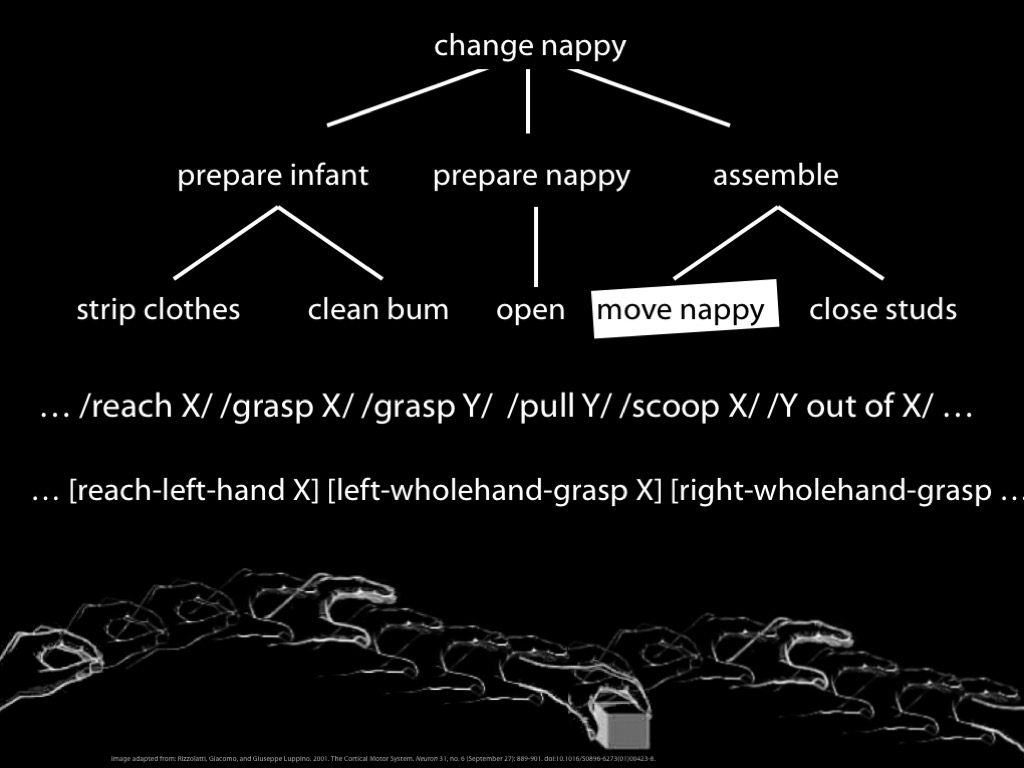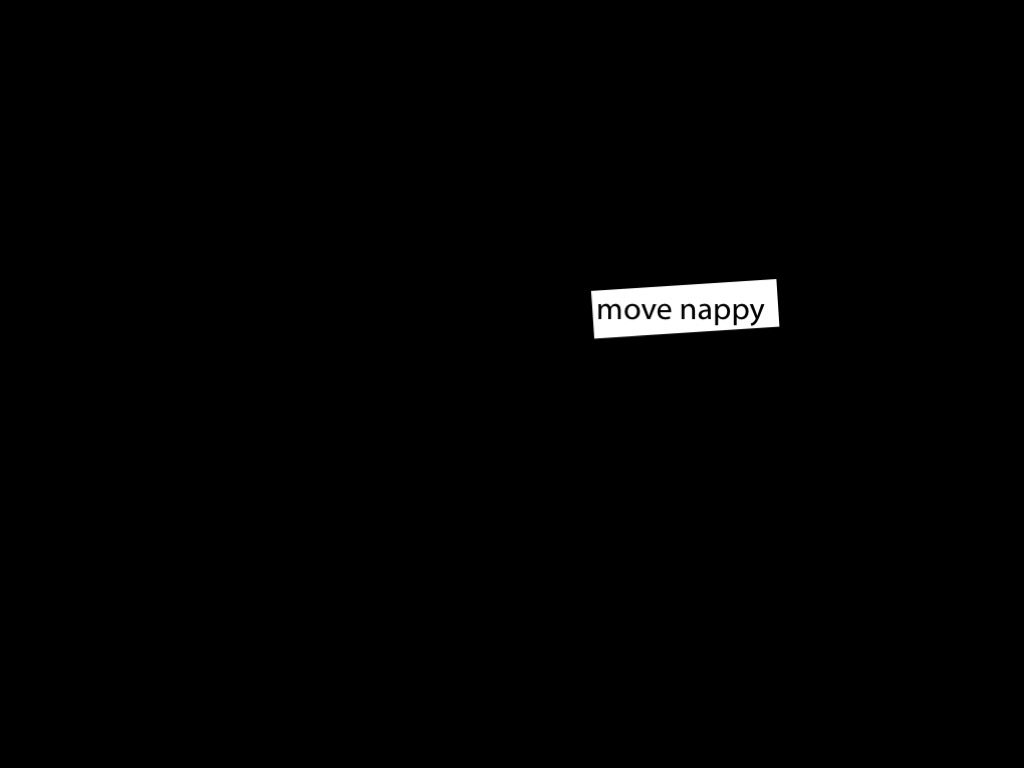Click here and press the right key for the next slide (or swipe left)
also ...
Press the left key to go backwards (or swipe right)
Press n to toggle whether notes are shown (or add '?notes' to the url before the #)
Press m or double tap to slide thumbnails (menu)
Press ? at any time to show the keyboard shortcuts
Action: Three Basic Principles
1
actions have hierarchical structures










1
actions have hierarchical structures
2
actions are individuated by outcomes
What has she done?
- She killed the king.
Not all outcomes are actual.
What is she doing?
- Digging a 6ft hole.
Will she succeed?
- No.
Not all outcomes are end states;
nor need they be consequences of actions.
What did he do?
- He reached for his gun.
Actions are individuated by outcomes.
type vs token
Ayesha and Alfie are raising money by running 10k.
Ayesha is running 10k.
Alfie is running 10k.
2
actions are individuated by outcomes
But what *are* bodily actions?
bodily configuration
joint displacement
outcome
3
one action can have multiple descriptions (the accordion effect)
What has she done?
- She killed the king.
How?
- She put poison in his ear.
How?
- She poured it from a bottle.
One action, many possible and actual outcomes.
1
actions have hierarchical structures
2
actions are individuated by outcomes
3
one action can have multiple descriptions (the accordion effect)